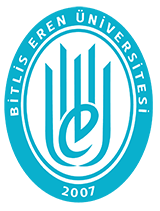DEVELOPING A NEW MODEL USING GENE EXPRESSION PROGRAMMING ON THE PREDICTION OF MOMENT CAPACITY OF FERROCEMENT ELEMENTS
Abstract
This study proposes a new equation to predict the moment capacity of ferrocement elements by using Gene Expression Programing (GEP) method that is one of the machine learning techniques. The experimental parameters that are selected to propose an equation are the beam width, beam height, cube compressive strength of concrete, ultimate tensile strength of the wire mesh and the volume fraction of the wire mesh. The predictions obtained from the proposed GEP model are compared with the experimental results obtained on the dataset available in the literature. In addition, the predictions of theoretical and GEP-based models in the literature are also compared with experimental results. Statistical analysis is performed on these comparative results. It is concluded that the proposed GEP model is superior to theoretical and the other GEP based model on prediction of moment capacity of ferrocement elements in the light of statistical data. Moreover, sensitivity and parametric analysis are conducted. It is also a conclusion to sensitivity analysis that the most effective parameters on the proposed GEP model are beam height, the volume fraction of the wire mesh and beam width, while the least effective parameters are cube compressive strength of concrete and ultimate tensile strength of the wire mesh. Finally, the conclusions of the analyses indicate that the predictive capacity of the proposed GEP model is acceptable in terms of accuracy and robustness of the model.
Collections

DSpace@BEU by Bitlis Eren University Institutional Repository is licensed under a Creative Commons Attribution-NonCommercial-NoDerivs 4.0 Unported License..













